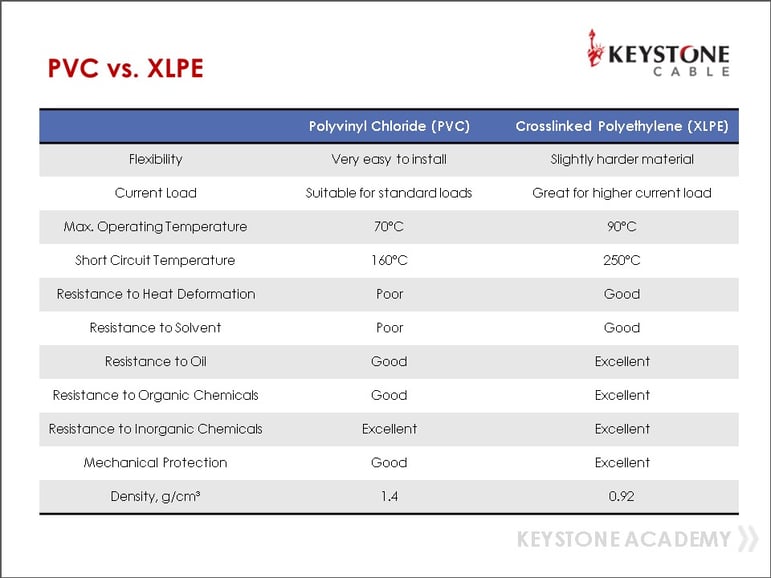PVC vs. XLPE: Comparison of Two Most Popular Cable Insulations
Electric cable conductors must be isolated from other conductors and the environment to prevent short circuits. To do so, we extrude a layer of insulation around the conductor.
Here, we examine Polyvinyl Chloride (PVC) and Crosslinked Polyethylene (XLPE), the two most common insulation materials used in the cable industry.
Why PVC Insulation?
PVC is the most widely used insulation material in power cables.
This is because PVC insulated cable is 1) a cost-effective material for electrical and physical protection for standard low-voltage building cables, and 2) has a small bending radius and is very easy to install in narrow places.
Applications for PVC cables include general low voltage cabling such as lighting and public building use.
However, standard PVC has certain limitations. 1) Standard PVC has a maximum operating temperature of 70°C, and 2) it is not as hardy a material when it comes to resistance to water and environmental stress cracking (ESC).
When should you choose XLPE Insulation?
XLPE has a maximum operating temperature of 90°C. This means that if we compared an XLPE insulated cable and a PVC insulated cable for the same conductor size, an XLPE insulated cable could carry a higher current load. This also means that based on your current load requirements, there may be instances where you would be able to select a smaller cable size if you used an XLPE insulated instead of a PVC insulated cable.
XLPE is a hardier material compared to PVC due to the cross-linking process. XLPE provides greater tensile strength, elongation and impact resistances compared with PVC. This cross-linking process also enhances the material’s resistance to oil and chemicals even at elevated temperature; this makes XLPE a popular pick as insulation for LSZH Flame Retardant or Fire Resistant cables.
Applications for XLPE insulated cables are therefore popular as main risers in buildings, LSZH flame retardant and fire resistant cables, as well as beyond low voltage applications such as medium to extra high voltage.
The table below shows a simple comparison of the properties of these materials.

Speak with our sales if you would like more information on what to choose for your requirement.
